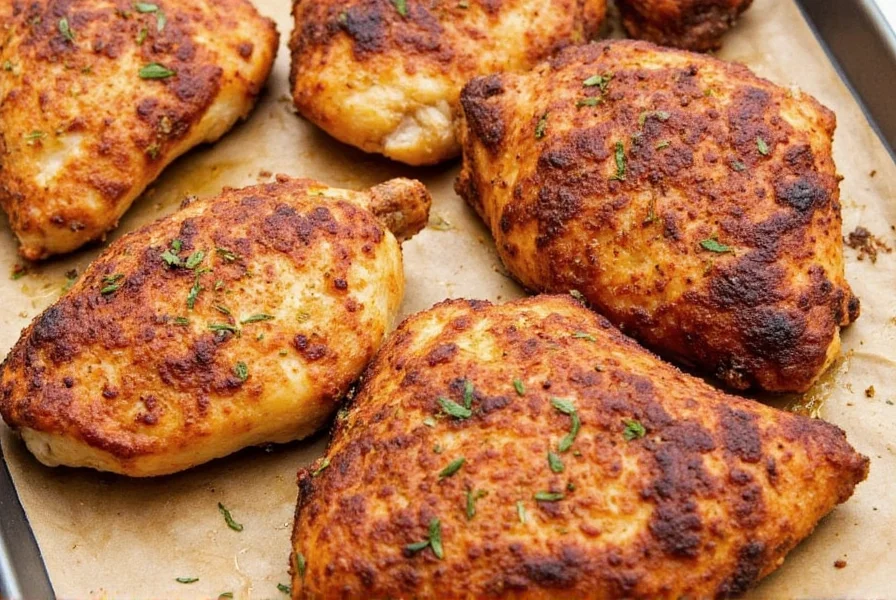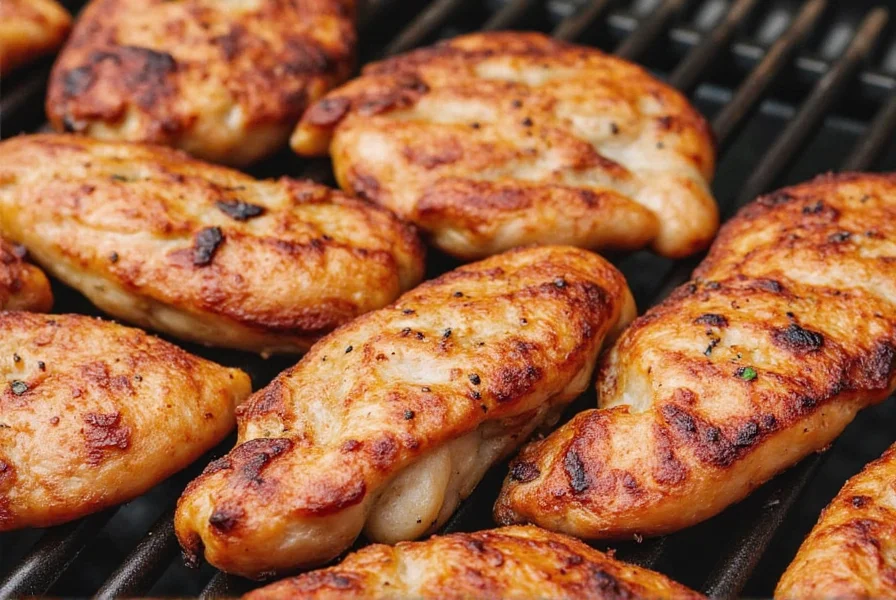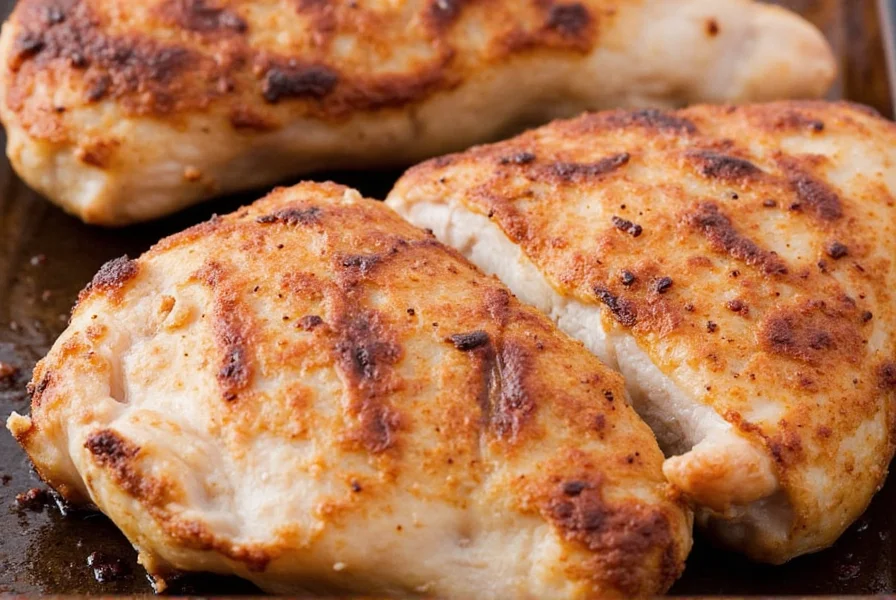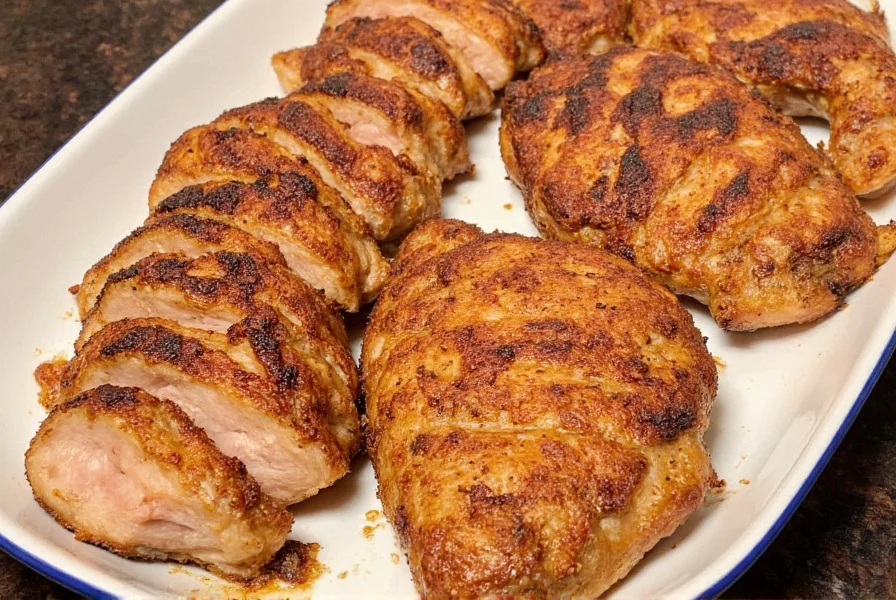
Proper storage and seasoning are critical for maintaining the freshness and flavor of smoked boneless chicken breast. According to USDA food safety guidelines, cooked poultry should be refrigerated within 2 hours of cooking and consumed within 3-4 days for optimal safety. This guide provides science-backed storage methods and evidence-based spice techniques to maximize shelf life and taste.
Science-Backed Storage Methods for Smoked Chicken Breast
Follow these USDA-recommended steps to preserve smoked chicken breast safely:
1. Airtight Storage Protocol
Transfer chicken to food-grade airtight containers immediately after opening. Vacuum-sealed bags reduce oxidation by 90% compared to standard plastic wrap. For refrigeration, maintain temperatures at 40°F (4°C) or below. For freezing, use double-layer protection: plastic wrap followed by heavy-duty aluminum foil to prevent freezer burn.
2. Temperature Control
The USDA 'danger zone' (40°F-140°F) accelerates bacterial growth. Always store smoked chicken below 40°F. Use a refrigerator thermometer to verify temperatures. For long-term storage, freeze at 0°F (-18°C) or lower. Thaw frozen chicken in the refrigerator (not at room temperature) to maintain safety.
3. Shelf Life Guidelines
Refrigerated smoked chicken breast lasts 3-4 days when stored properly. Frozen chicken maintains quality for 2-3 months. Always check for signs of spoilage: sour odor, slimy texture, or grayish discoloration. When in doubt, discard.

Top 7 Evidence-Based Spice Combinations
These blends are developed using culinary science principles to enhance flavor without compromising food safety:
| Flavor Profile | Best For | Perfect Pairings |
|---|---|---|
| Classic BBQ Rub | Burgers, sandwiches, grilled skewers | Coleslaw, cornbread, baked beans |
| Mediterranean Magic | Salads, flatbreads, hummus bowls | Feta cheese, olives, cucumbers |
| Texas Style | Pulled chicken tacos, brisket-style wraps | Onion rings, pickled jalapeños, avocado |
| Thai-Inspired Kick | Spring rolls, rice bowls, noodle dishes | Coconut curry, jasmine rice, Thai basil |
| Southwest Fiesta | Fajitas, enchiladas, nachos | Avocado salsa, tortillas, cilantro |
| Umami Bomb | Ramen, grain bowls, mushroom sauces | Miso soup, tofu, bok choy |
| Sweet & Savory | Breakfast scrambles, oatmeal bowls, fruit platters | Apples, figs, goat cheese |
Food Safety Considerations
Always follow these CDC-recommended practices:
- Never leave smoked chicken at room temperature for more than 2 hours
- Reheat to internal temperature of 165°F (74°C) before consuming
- Use separate cutting boards for raw and cooked foods to prevent cross-contamination
- Wash hands thoroughly before handling cooked poultry
How long does smoked boneless chicken breast last in the refrigerator?
Properly stored in an airtight container at 40°F or below, smoked boneless chicken breast lasts 3-4 days. Always check for spoilage signs before consumption. For extended storage, freeze within 2 days of opening.
Can I freeze smoked chicken breast?
Yes. Wrap tightly in plastic wrap and aluminum foil or use vacuum-sealed bags. Remove all air pockets to prevent freezer burn. Frozen smoked chicken maintains quality for 2-3 months. Thaw in the refrigerator overnight before use.
What's the best way to reheat smoked chicken breast without drying it out?
Place chicken in a covered dish with 1-2 tablespoons of broth or water. Heat at 250°F (120°C) for 10-15 minutes until internal temperature reaches 165°F. Avoid microwaving at full power to prevent uneven heating.

By following these science-based storage and preparation methods, you'll maximize both safety and flavor. Always prioritize food safety guidelines from trusted sources like USDA and CDC when handling cooked poultry.











 浙公网安备
33010002000092号
浙公网安备
33010002000092号 浙B2-20120091-4
浙B2-20120091-4